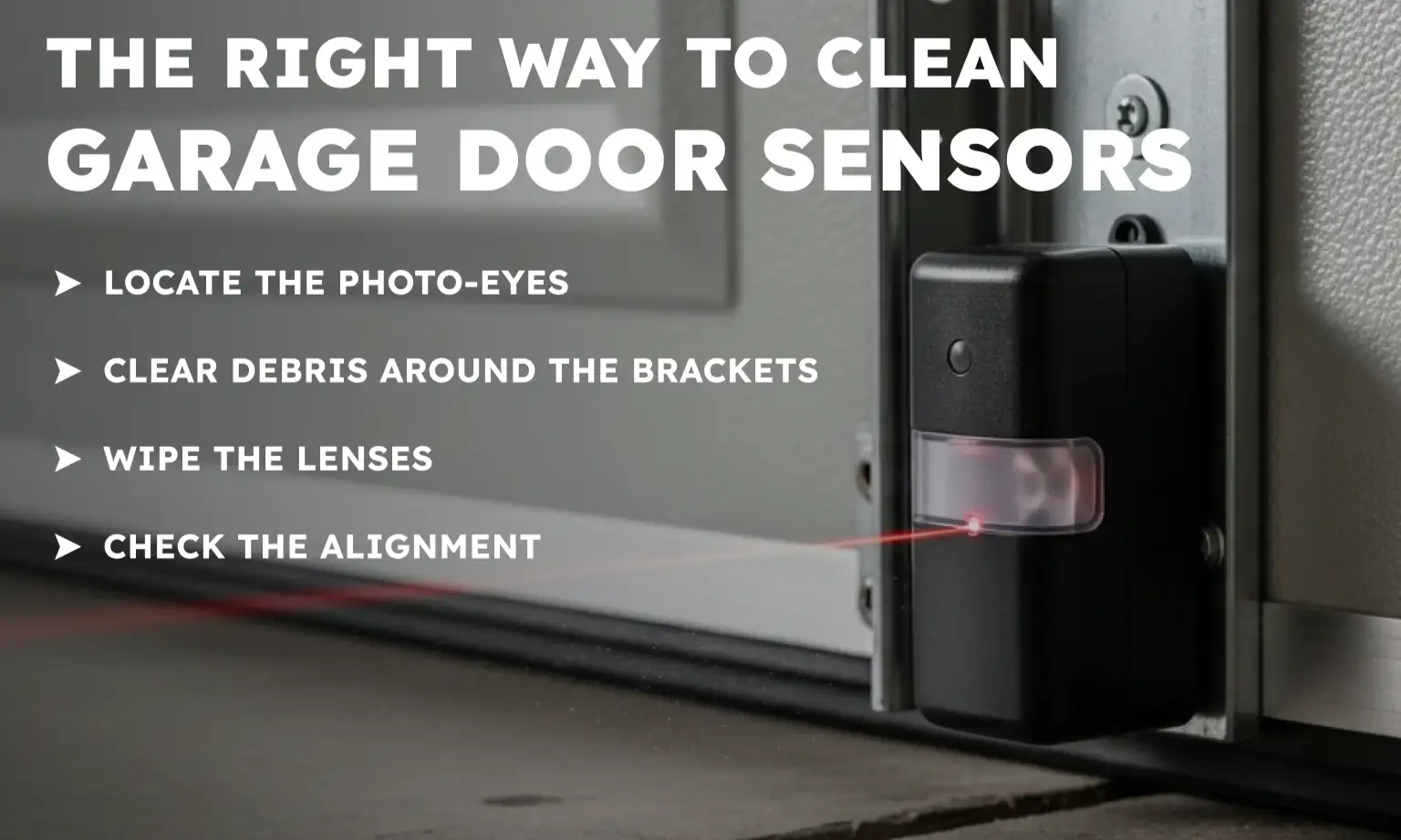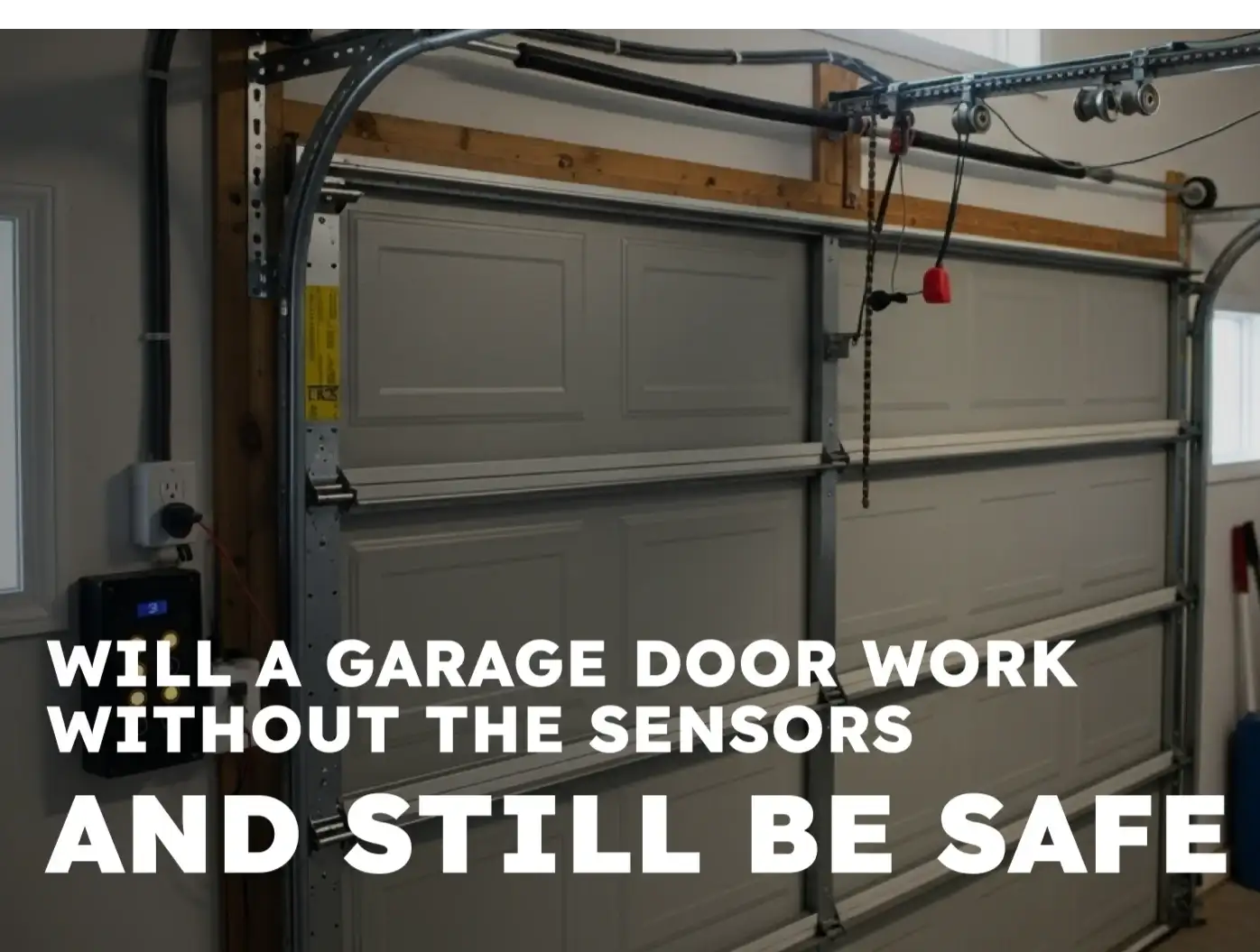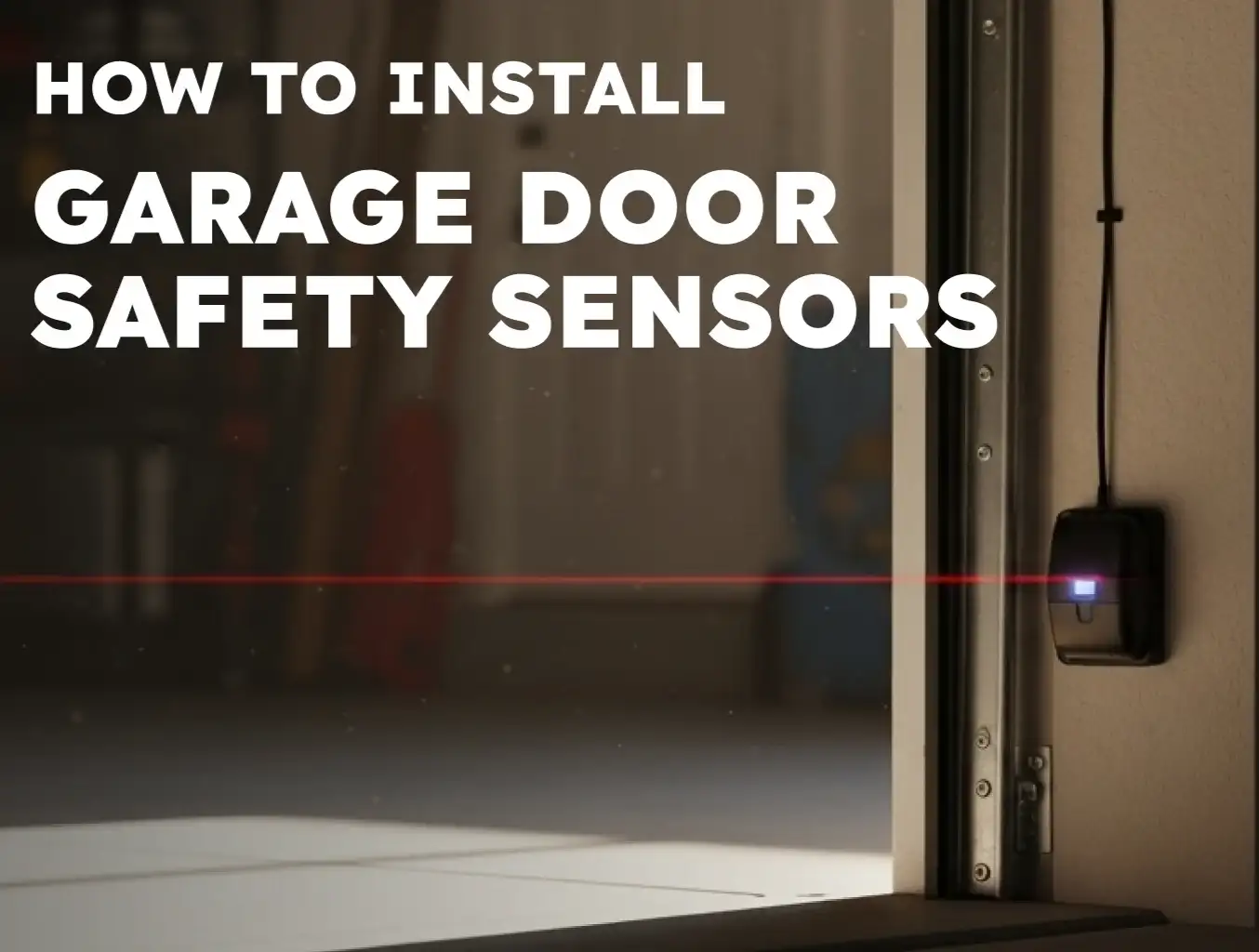How to Clean Garage Door Sensors: Simple Steps
Published Date: Nov 24, 2025
Getting ready to host a party? As the weather turns colder and you’re pulling in and out of the garage more for errands and family get-togethers, your sensors can collect extra dust, dirt, and even slushy road salt. A quick wipe of the sensor lenses with a clean, dry cloth to clear away dust, grime, or spiderwebs is often all it takes to bring back the invisible beam between the two units and get your garage door closing safely again. In this guide from Up & Down Garage Doors, we’ll show you how to clean garage door sensors step by step, so you can get back to enjoying your time with the people who matter most.
Garage Door Maintenance Tips: Spot Sensor Issues Fast

As part of basic garage door troubleshooting, knowing when to clean your sensors saves time. Garage door maintenance tips often focus on springs or cables, but the photo-eye sensors (the small “eyes” near the bottom of the door) are the most sensitive parts of the system. These small boxes sit near the floor on either side of the tracks, and when they get dirty, the opener behaves as if something is blocking the door.
Watch for these signs that dirt is the problem:
Amber or Flashing LEDs.
A sensor light flickers or turns off instead of glowing steadily.Immediate Reversal.
The door moves down a few inches, stops, and goes back up.Sticky Residue.
Pollen, wet leaves, or mud coating the glass lens.Spiderwebs.
Dense webs spanning across the sensor bracket.
If you notice these symptoms, you likely don’t need to fix the garage door sensor wiring or replace the units — a simple cleaning usually restores the beam. Ready to solve it the quick way? Keep reading to learn how to clean garage door sensors step by step so your door closes smoothly again.

The Right Way to Clean Garage Door Sensors
Cleaning these delicate electronic parts takes a gentle touch. Harsh cleaners or rough scrub pads can scratch the lens and ruin the sensor for good, so use the steps below to clear the signal path safely.

Locate the Photo-Eyes
Find the small, box-like devices mounted on the vertical tracks, usually about six inches above the garage floor. One sits on the left, the other on the right.
Clear Debris Around the Brackets
Remove any cobwebs, dead leaves, or stored items crowding the sensor brackets. The space between the two sensors needs to be completely open.
Wipe the Lenses
This step is the heart of how to clean garage door sensors. Grab a soft, dry microfiber cloth and lightly wipe the glass “eye” on the front of each sensor. Skip water or glass cleaner unless the grime is really stuck on, and even then, only use a slightly damp cloth. Too much moisture can work its way into the sensor housing and cause damage.
Check the Alignment
After cleaning, look at the LED lights. Both should glow steadily instead of blinking. If they are still flashing, cleaning wasn’t the only issue, and you may need to learn how to align garage door sensors to get them facing each other perfectly.

When Cleaning Doesn’t Fix Garage Door Sensor Issues
Sometimes, a clean lens isn’t enough to solve the problem. If you’ve wiped both units and the door still refuses to close, you might be dealing with electrical issues, wiring corrosion, or a failed circuit board.

Inspect the Sensor Wiring
Check the wires connected to the back of each sensor. They should be firmly attached with no exposed copper touching the metal track. If the wiring looks intact, the sensors themselves might be defective.
Think Twice Before Turning Off Safety Features
In rare cases, homeowners ask how to disable garage door sensors entirely just to get the door to close. While you can hold the wall button down to override the safety system for a moment, permanently removing these safety devices violates federal safety standard UL 325 and creates a serious hazard.
Use Bypass Only as a Short-Term Last Resort
If you’re stuck and need to secure your home immediately, knowing how to bypass the garage door sensors can be a temporary workaround while you wait for help. This should only be a short-term solution, not an everyday habit.
Call a Professional for a Safe Repair
For a permanent and safe fix, you’ll likely need professional repair. A technician from Up & Down Garage Doors can test the voltage and replace faulty wiring or the sensors themselves, so your system works safely again.

Keep Your Garage Door Moving: Easy Sensor Maintenance Wrap-Up
Regular sensor maintenance doesn’t take long, but it goes a long way toward keeping your door safe and headache-free. Now that you know how to clean garage door sensors and spot the early warning signs of dirt or misalignment, you can handle the simple fixes before they turn into bigger problems.
If you’ve walked through the steps, wiped the lenses, checked the wiring, and your door still won’t cooperate, it’s time to bring in an expert. Up & Down Garage Doors offers professional garage door opener repair so you don’t have to guess at electrical issues or faulty parts on your own. We’ll track down what’s really going on with your sensors, get the door working properly again, and let you get back to enjoying your home.
Frequently Asked Questions
Can I use glass cleaner on my garage door sensors?
No, it’s best to avoid standard glass cleaners. They can be too harsh for the plastic lens cover or leave a residue. A soft, dry microfiber cloth is usually sufficient. If necessary, use a tiny amount of mild soap and water on the cloth, not directly on the sensor.
Why is one garage door sensor light green and the other orange?
This is normal for many brands. Typically, the “sending” sensor has an amber or orange light, and the “receiving” sensor has a green light. As long as both lights are glowing steadily and not blinking, your sensors are powered and aligned correctly. If you’re unsure what the colors mean or if one light is off, check out our troubleshooting guide on garage door sensor lights for more details.
How often should I clean my garage door sensors?
You should wipe them down every three to six months. If you live in a dusty area or have a lot of spider activity in your garage, you may need to check them more frequently.
Does sunlight affect garage door sensors?
Yes, direct sunlight hitting the receiving sensor lens can “blind” it, causing the door to reverse as if there were an obstruction. Cleaning the lens helps, but you may also need to make a small cardboard sun shield around the sensor to block the glare.
Can I eliminate garage door sensors to stop my door from getting stuck?
You should not eliminate garage door sensors. They’re a key safety feature designed to keep the door from closing on people, pets, or cars. Removing or bypassing them permanently goes against safety standards and can put your family and property at risk. If your sensors are causing trouble, start with cleaning and basic checks. If that doesn’t help, call a professional instead of removing them.


